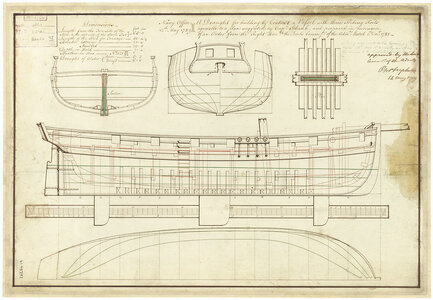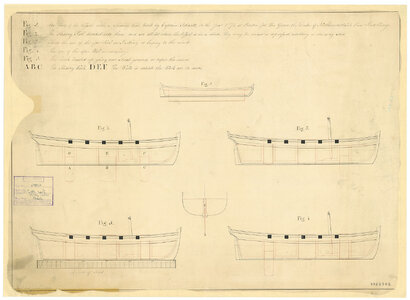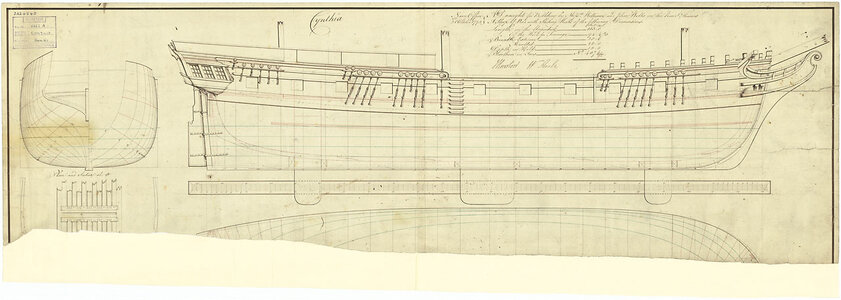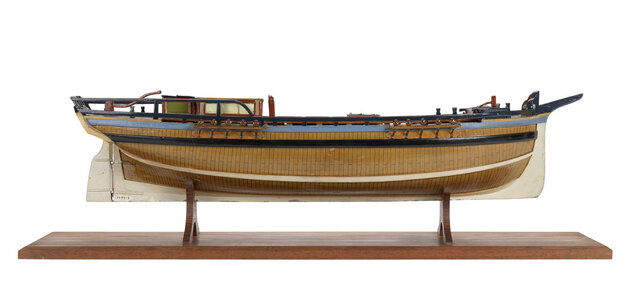- Joined
- Apr 19, 2020
- Messages
- 84
- Points
- 143


That wood work is the best. I really like it. I think I might try hitting the wood with a clear coat to bring out the grain. Try it on some scraps first though. Very nice work Loracs. Beautiful. NorgaleThis is my first large project: the HMS Revenge. I could not bring myself to cover the wood... either with paint or paper decals. I took the liberty to improvise with wood only... mostly walnut strips, walnut/maple and feathered walnut inlays.
View attachment 416332
View attachment 416331
View attachment 416326View attachment 416327View attachment 416333View attachment 416334View attachment 416335

So good!Russian 20-gun brig "Olimp" (ru "Олимпъ") 1817 1:78. I didn't take many pictures back then... (all foto in 2018)
In the last photo there is also a 12-gun cutter HMS "Trial" 1790 1:78
View attachment 425938
View attachment 425942
View attachment 425943
View attachment 425944
View attachment 425945
View attachment 425946



Do you have more photos of this museum model than the four available on the NMM page?Exactly. I made it according to these drawings. At the same time, I also used a photo session of a museum model.
View attachment 426098
View attachment 426099

No ProblemThese are famous photos
Indeed, standard clear coat did bring the grain up but also give a slightly yellowish hue. At the end I settle on matte clearcoat, which was neutral overall.That wood work is the best. I really like it. I think I might try hitting the wood with a clear coat to bring out the grain. Try it on some scraps first though. Very nice work Loracs. Beautiful. Norgale
Maybe you can post them in a extra new topic here in the museum model area - many thanks in advanceNo Problemthere are only 20 of them. How to do it?

I think other exhibits from museums in Russia can be posted there?Maybe you can post them in a extra new topic here in the museum model area - many thanks in advance
Maritime Museum Models
This Forum is about photos of Models taken at Maritime Museums.shipsofscale.com
Off course - as much as you want and haveI think other exhibits from museums in Russia can be posted there?

As I know it was first time designed by Captain John Schank in 1774Fascinating! An18thc. English Cutter with drop keels or center boards. That's the earliest I've see of center boards. Surely one of you experts on the forum knows when the drop keel or center board first appeared.
These models are wonderful examples of scratch model building at its best and a privilege to see. Thanks for sharing them!








Great work.Quick question… what have you used for the sails as they look nicely to scale.Russian 20-gun brig "Olimp" (ru "Олимпъ") 1817 1:78. I didn't take many pictures back then... (all foto in 2018)
In the last photo there is also a 12-gun cutter HMS "Trial" 1790 1:78
View attachment 425938
View attachment 425942
View attachment 425943
View attachment 425944
View attachment 425945
View attachment 425946

It's a fine chintz fabric. It will be even better if you use cambric.what have you used for the sails as they look nicely to scale.

Many thanks, very elucidating!As I know it was first time designed by Captain John Schank in 1774
John Schank was known as a man with a particular mechanical understanding. So he designed a bed that could be raised or lowered when in use. This earned it the nickname Old Pulley. In 1774, in Boston, he designed a private boat with a lowerable keel suitable for shallow waters. He later presented his invention to the Admiralty. Two identical ships of 13 tons were ordered, one with a lowerable keel and the other without. Since the design proved successful, several ships with lowerable keels were built, such as the HMS Cynthia and the research ship HMS Lady Nelson.
View attachment 426901
Sliding keel designs by Captain Schank for an unnamed boat (1774) and and unnamed cutter (no date)
Scale: 1:48. Plan showing the profile of a boat with one long sliding keel built at Boston in 1774 for Lord Percy, Duke of Northumberland; and a section and four profiles of a cutter (no cutter) illustrating how the sliding keels can be used depending upon the angle and strength of the wind. The plan has an explanation key.

John Schank - Wikipedia
en.wikipedia.org

John Schank – Wikipedia
de.wikipedia.org
HMS Cynthia (1796) - Wikipedia
en.wikipedia.org

HMS Lady Nelson (1798) - Wikipedia
en.wikipedia.org
View attachment 426902
View attachment 426903
Cynthia (1796)
Scale: 1:48. Plan showing the inboard profile for Cynthia (1796), a 16-gun Sloop fitted with three sliding keels, building at Rotherhithe by Messrs Wells.
Collection Results | Royal Museums Greenwich
Explore seafaring history, timekeeping and astronomy, fine art and the world's largest maritime library and archive collection. Start your search today.www.rmg.co.uk
View attachment 426904
Lady Nelson (1799); Passenger vessel; Brig
Contemporary full hull model of the ‘Lady Nelson’ (1799), built at a scale of 1:32. The model, which is decked, has been constructed in the solid from planks of wood assembled in the 'bread and butter' fashion. The frames have been drawn onto paper, which has then been glued to the hull and painted with a layer of varnish. This in some ways uses the 'navy board' style to highlight the overall shape of the very shallow hull, which enabled the 'Lady Nelson' to carry out survey work around the shallows of the coastlines. To help overcome leeway and sail efficiently with a shallow draught, sliding keels designed by Captain John Schank (1740-1823) were fitted. The casings for these can be seen on the deck of the model by the main hatch, deckhouse and windlass.
The 'Lady Nelson' was originally rigged as a cutter but this was changed to that of a brig when it was fitted for the long voyage to Australia for survey work in 1800. The vessel was later destroyed by the inhabitants of Babber Island, Timor in 1825.
